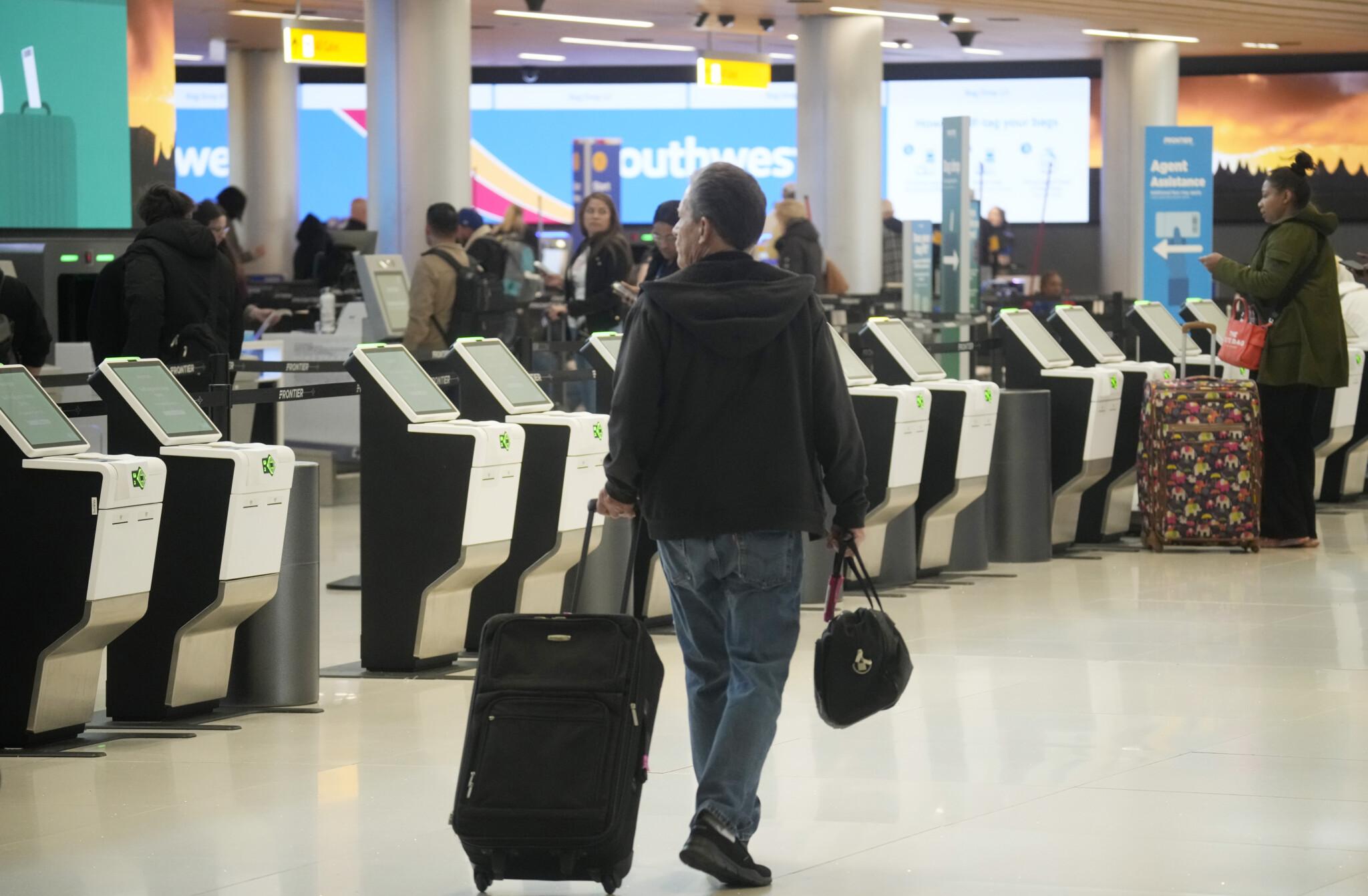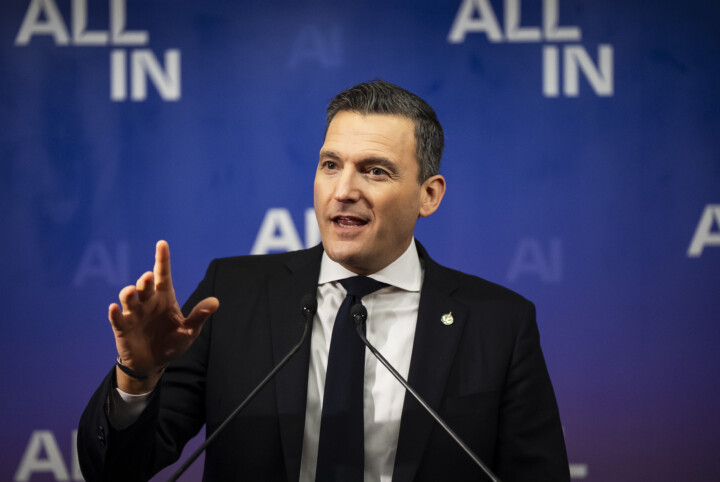I’ve been building airports for decades now—runways, taxiways, terminals, airport systems. These big capital programs have two very important things in common: things you’re desperate to fix today, and things you’d strongly prefer not to fix again tomorrow.
Many of my colleagues are working on these things right now because the global airport-building business is busy. With COVID behind us, passenger numbers are back to their 2019 levels and deferred investments are finally being made, especially at large hub airports, many of which were already operating near or beyond their designed capacity.
Dubai is planning the new Al Maktoum International Airport. Singapore Changi is building the new Terminal 5. Salman Airport in Saudi Arabia is under development. All three of New York’s Port Authority airports are building—LaGuardia just redeveloped its Terminal B and Newark just opened its new Terminal A. Montreal-Trudeau is building. And yes, Toronto Pearson is building, too—we recently launched a 10-year LIFT Program infrastructure program and are also working on a vision plan for Toronto Pearson that goes beyond that program to position the airport for growth well into the future.
These investments in the airports of the future are being driven by several big trends, including demand, digitalization, efficiency, sustainability, and passenger experience. We don’t know what tomorrow will bring, but we can chart these trends and build flexible, future-ready infrastructure
Demand? Global air travel has made an extraordinary recovery since the end of the pandemic. It varies by country and airport but demand keeps growing in the aggregate. The International Air Transport Association estimates that global passenger numbers will increase by an average of 3.8 percent annually over the next 20 years. In North America and Europe, it’s putting big pressure on big airports, which are already working around slot constraints, crowded terminals, and airlines that are replacing point-to-point travel with connecting flights through central hubs and gateways.
Some of these hubs, like heavily transited London Heathrow, are constrained by runway capacity. Others, like Toronto Pearson, which forecasts its passenger volume to increase to at least 65 million passengers a year over the next decade, need to add gate and terminal space. Our solutions include an interim terminal to accommodate near-term growth and a revitalization of our existing terminals to optimize capacity. We may look to gain space by relocating in-terminal offices and converting some open-concept areas to check-in desks.
As for digitalization, passengers are starting to expect it and airports are starting to require it. Airlines, agencies, and retail partners tend to be the face of digitalization, but airport authorities need to build digital capacity for themselves and to accommodate others. They’re investing accordingly.
Technology like electronic gates and self-service kiosks, which Pearson has installed in its customs halls, have substantially reduced processing time and are helping increase passenger throughput. But these are increasingly seen as table-stakes—artificial intelligence will transform passenger experience in the airport of the future.
Customer service systems can use AI to help agents support passengers. Chatbots can be deployed at kiosks or on screens to give directions, answer passenger questions, facilitate hotel bookings, or translate for international passengers in transit.
At Toronto Pearson, we’ve deployed image-processing AI technology to provide live wait times for check-in and security. At the gate, passengers—particularly those who are deaf or hard of hearing—can scan a QR code for boarding updates while they wander nearby shops and restaurants.
Another high-potential use for AI is in creating unique retail experiences. Autonomous, checkout-free stores have begun to appear in some airports, including Hong Kong, Dublin, Oslo, and Toronto Pearson. These use AI and machine vision to track customer purchases and charge them as they exit, which is attractive for passengers in a rush. At Singapore’s Changi, a boutique has opened with a range of AI-powered immersive experiences, including a robot bartender.
Efficiency might sound like a Wall Street term, but for airports, it isn’t just about saving money. It’s about managing demand and improving passenger experience.
It often overlaps with digitalization. For example, Pearson uses AI to monitor gate turnaround times and for proactive maintenance of the baggage system. Our next system will include many more efficiencies, from scanning tech to end-to-end bag tracking.
But efficiency is also about “hard” airport infrastructure—building on the lessons learned in many years of building, operating, and watching trends in how it’s used. For example, this summer, Frankfurt opened a new system of high-speed taxiways that are expected to cut the time between landing and gate by 30 percent. We intend to replicate this in Pearson’s capital program. We will also be investing in our water management systems, in order to minimize airfield downtime during the heavy rains and flooding that are becoming increasingly common.
Speaking of climate change, the future implications for airports are very real. Coastal areas will produce some of the most severe effects, and sea-level airports are building to mitigate the risks. San Francisco International and Osaka’s Kansai have built or raised their seawalls to account for rising sea levels and storm surges. And Singapore’s Changi has raised surface roads, built tidal gates, and installed tech-enhanced drainage enhancements, including sensors that tell air traffic control when runway water becomes an issue.
Others are finding that sustainability can be a virtue in its own right, especially when paired with efficiency. Canadian airports like Pearson and Edmonton International are installing EVs and becoming hydrogen hubs not just for aircraft but for wider use, as explored earlier in this series. Meanwhile, Amsterdam’s Schiphol has become a global leader in circular design, rebuilding with precision demolition and recycled materials. In 2015, it opened an airport bus station using a former Second World War air hangar that was reimagined with LED lights and solar panels.
Finally, there is passenger experience, which covers the human journey from parking lot to gate. Yes, it’s about those digital tools and efficiencies. But it’s also about physical infrastructure that’s built to create a sense of place. Since the pandemic, travel has become less about last-minute quick-hop business flights and more about leisure and “bleisure” trips. This means different destinations, different aircraft mixes, and different passenger demographics—for example, more vacationing seniors and families.
The prime examples of sense of place are airports like Changi and New York’s newly renovated LaGuardia, which are architecturally stunning and should be studied by anyone planning a new build or renovation. But airport planners also need to show lower-key intentionality in creating places and spaces that respond to a broad range of passenger needs.
This mindset is already showing in the increasing prevalence of areas like quiet zones that aim to provide stress-free retreats. Gate areas are also ripe for reimagination: Rows of identical seats can be reinvented as boarding lounges, designed to suit the needs of a variety of travellers—workspaces for people to use laptops, floor space for families with children, entertainment areas aimed at young adults.
Toronto Pearson has been addressing accessibility with hundreds of small changes around our terminals. For example, seating is now available every 30 metres between the parking garages and the gates. We have made comprehensive upgrades to washrooms, created barrier-free access to our multi-faith rooms, and improved wayfinding with lighting, door markings, and floor-level indicators.
Infrastructure must last many decades to recoup its high construction costs and there will always be changes that nobody sees coming. Flexibility is required to ensure investments don’t end up prematurely obsolescent. For example, back in the early 1990s, when Pearson built Terminal 3, we installed extra space below the floor of the check-in areas where wiring for self-check kiosks could eventually be added, saving major headaches down the road.
Today’s tech is advancing so rapidly that it’s impossible to predict what it will look like in two or three decades. We do know that whatever the technologies are, they’ll still need power sources and data centres, so we are planning modularity and spare connections capacity so that we can easily add or exchange end devices in the future.
We can squint and see the airport of the future, or at least its outline. We know what needs fixing, we know what the trends are and we hope to minimize what needs fixing down the road. That’s how we build the airport of tomorrow, today.
This article was made possible by Toronto Pearson Airport and the generosity of readers like you. Donate today.










